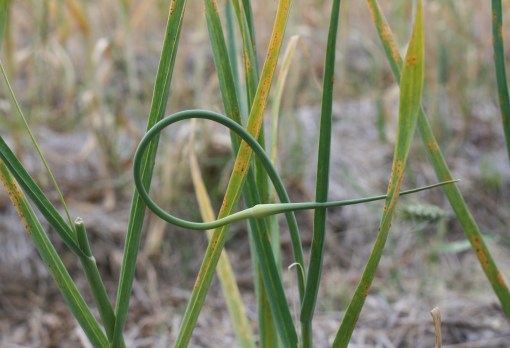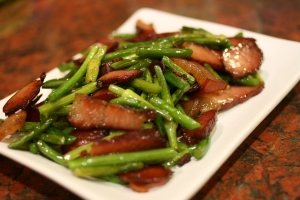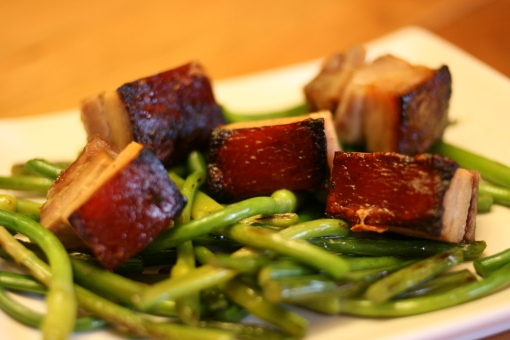
Fava Bean Amuse
There is nothing more seasonal in the vegetable kingdom than fava beans.
Asparagus, corns, tomatoes also have a limited season, but you can find those in the supermarkets pretty much all year long, no matter how tasteless they are. Fava is just below the radar, not popular enough for hot house or imports from Chile.
Thank goodness.
I plant my own fava beans because I like mine tender, sweet with a mild crunch and I can go from garden to table in less than one hour. Big, fat, starchy ones need not apply.
I should also mention that they grow vigorously with no extra care what so ever.
Traditionally, fava requires two steps of shelling. First from the long pods, followed by a quick boil, followed by an immediate ice bath which preserves the brilliant green. Finally they are shelled again to reveal the very inner ‘peas’.
That’s a lot of work and a lot to throw away.

Whole Roast Fava Beans
That’s why roasting them whole is very appealing. I had it a few years back at A16. Such a revelation. The only problem is, you have got to have the very first crop, the tender sweet ones. A week or two older, the pods are too tough.
The anchovy is not a must, but it really adds another dimension. It absolutely does not make it fishy. It’s all about umami.
To roast whole, generous toss young fava beans with good olive oil, kosher salt and pepper to taste. Snip a few oil-preserved anchovies. Roast in 400F for 25-30 minutes. They should be very limp with nice caramelization. Once out of the oven, chiffonade some mint leaves on top if you happen to have them running wild in your backyard. No garnish is perfectly fine.
For the absolutely tender, sweet ones, lightly toss them with the best olive oil you got, salt and pepper, then just a little bit of chopped tarragon on top. The taste is ethereal.

















